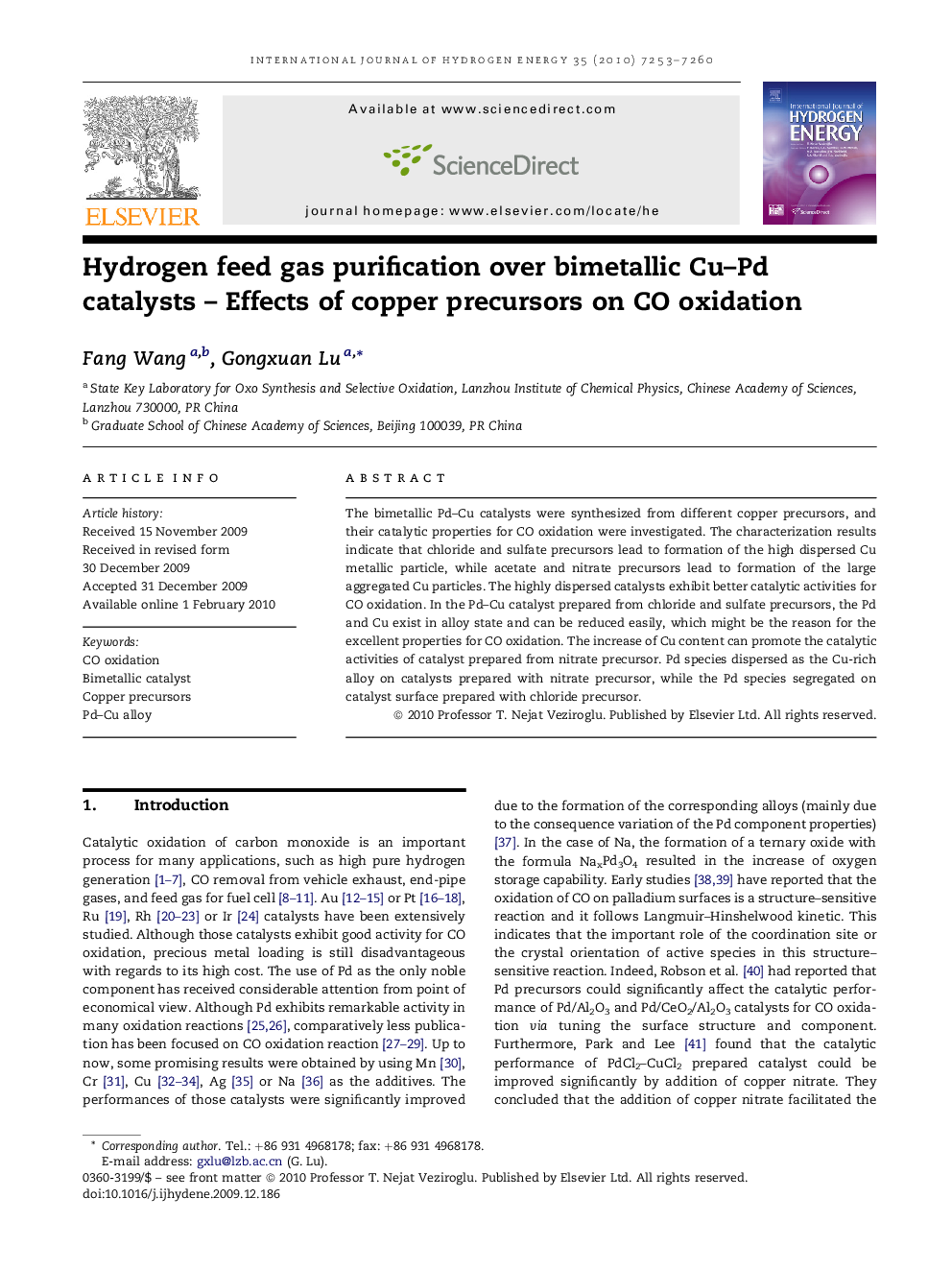| Article ID | Journal | Published Year | Pages | File Type |
|---|---|---|---|---|
| 1272975 | International Journal of Hydrogen Energy | 2010 | 8 Pages |
The bimetallic Pd–Cu catalysts were synthesized from different copper precursors, and their catalytic properties for CO oxidation were investigated. The characterization results indicate that chloride and sulfate precursors lead to formation of the high dispersed Cu metallic particle, while acetate and nitrate precursors lead to formation of the large aggregated Cu particles. The highly dispersed catalysts exhibit better catalytic activities for CO oxidation. In the Pd–Cu catalyst prepared from chloride and sulfate precursors, the Pd and Cu exist in alloy state and can be reduced easily, which might be the reason for the excellent properties for CO oxidation. The increase of Cu content can promote the catalytic activities of catalyst prepared from nitrate precursor. Pd species dispersed as the Cu-rich alloy on catalysts prepared with nitrate precursor, while the Pd species segregated on catalyst surface prepared with chloride precursor.
